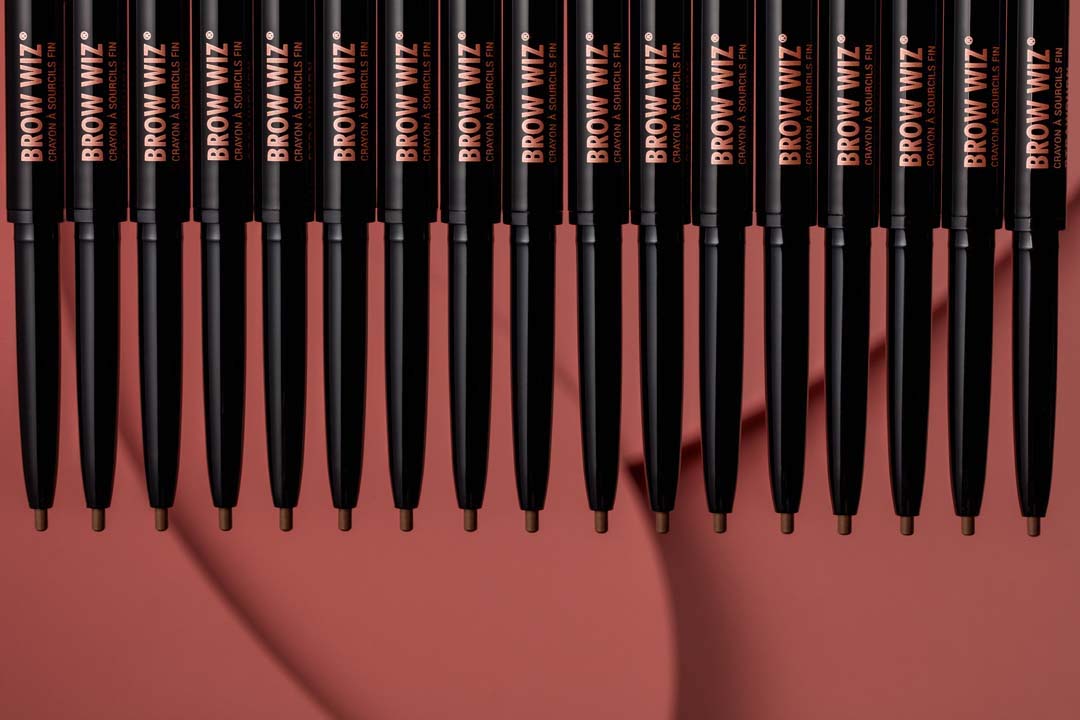Red light, green light: Dr Elizabeth Lombardo guides you on a road map to success


You’re stuck. Or at least you think you are. Stuck in the same job. Stuck in the same life choices. The same patterns, the same outcomes. You strive to understand its design, but its shape is an incoherent blur. You even acknowledge some of your mistakes or weaknesses, but rising above the heap of mixed emotions and turmoil seems insurmountable. According to Dr Elizabeth Lombardo, none of us comes out of the womb with a blueprint. And no one gives us one, either.
Shaquille O’Neil dubs Lombardo his ‘head coach for happiness’. Her books, such as Better Than Perfect and the upcoming Get out of the Red Zone, help millions of readers realize their full potential and self-worth. She is a frequent guest on countless television and news outlets, including Today, Good Morning America, Dr Oz, CNN, The New York Times and Forbes, along with her popular TED Talk lectures. Lombardo’s personal client list includes luminaries from the worlds of business, sports and entertainment who turn to her to help them crush their inner critic, arouse dormant inspiration, and unleash new potential and ideas.
So why Dr Lombardo? Is it her infectious personality? Her deep well of knowledge of how the human brain is wired? Is it her wealth of insight into our emotions and motivations? All of the above, and more. Dr Lombardo is your cheerleader with a Ph.D. The doctor who gives actionable guidance. For Lombardo, the glass is already half full—she just gives you the ingredients and utensils to fill it to overflowing.
Every bit as effervescent as she appears on camera, her knowledge extends to every facet of life, though we focus on why you may feel as if you’re in a cement-clad rut, and how to chisel your way out.
Lucire Rouge: Many women feel frustrated with their careers. They see others succeed and realize their dreams. What is holding some back if they want more?
Elizabeth Lombardo: Perfectionism. It’s an all-or-nothing mentality, something is perfect or it’s a failure. It is either, ‘I know what to do, so I’m going to do it,’ or ‘I don’t have 100 per cent of the information, so I’m going to wait.’ A perfectionist thinks in all-or-nothing terms; something is either perfect or a failure. And if that something is a failure, then I’m a failure.
What is the first thing you tell someone who has this self=defeating script engraved in their head?
Know that part of being successful is having some monumental failures. (When a client) tries things out and realizes, ‘Wow, I will never do that again.’ I tell my coaching clients that it’s not failure, it’s data. We learn from it and how to make changes. We can keep that inner critic turned down.
Is the inner critic an innate or learned behaviour?
When you go to school, you get a syllabus. You follow the syllabus and you get the degree. When you are in the working world, you may not have one unless you’re the CEO of the company. Often there is someone saying, ‘Here’s kind of what you need to do.’ As for entrepreneurship, there is no singular way to do it. And so that lack of specific guidelines or blueprint is scary for a lot of people. They don’t want to put themselves out there or be embarrassed. And so what happens instead is a lot of people are more willing to just think, ‘Oh, I wish I could do that,’ rather than, ‘I’m going to do it. It’s not going to look pretty necessarily, but eventually, it will. And I’m going to do it because I have to.’
How does a person know when they have to do something?
Because in your heart of hearts, you absolutely know you’re supposed to do this. It doesn’t matter how scary it is. You may literally have no idea what to do. Doesn’t matter. You have to do this for your soul, for your purpose. It makes things better when we can focus. I’m so passionate about helping people have the skills to deal with whatever life throws at them.
Let’s say someone has a great idea and wants to make their passion a reality. How do they get past all the naysayers and negativity?
One, find a support group of other like-minded entrepreneurs. Ideally not only those just starting out but people who have been successful. The other thing to consider is you probably wouldn’t allow someone to decide everything you were going to eat. If you said to everyone, ‘Hey, tell me what I should eat,’ sometimes they tell you coffee, sometimes they tell you lobster, and sometimes they tell you worms in dirt. You can choose what works for you and what doesn’t. And yet, for some reason, when we hear other people’s advice, we’re eating all these worms.
Many people feel they are too old or don’t have enough experience to make a change or start a new venture. What would you say to them?
The average age of a female entrepreneur is the mid- to late-40s. And that’s an average. So if you’re older than that, you’re in the company of a lot of successful people. And in my opinion, the older you are, the more experience you have. There’s also something different about you or what you’re creating. Sometimes it’s the service. Sometimes it’s the story.
There’s always going to be someone thinner, smarter, richer. The question is: why would that stop you? Every person on YouTube with a million followers started with one, and it was probably their friend or their mother. And remember, everyone can look good with a filter. When the time of reckoning comes, it’s why let something like self-doubt stop you?
Your upcoming book Get out of the Red Zone discusses the emotional conditions that hold us back. Can you elaborate on that?
It is looking at where you are in terms of your level of distress—this is any emotion we don’t want. It’s kind of the negative part of stress. So it could be hopelessness, helplessness, worthlessness, guilt, anxiety, fear, worry. All of that goes in the distress pile. Stress is on a scale from zero to ten. When we are at a seven out of ten or higher, I call that the red zone. We think differently, we process information differently and we interact differently. In the green zone, however, we’re using our frontal lobe, the structure that differentiates us from other animals. It allows us to engage in effective functioning, problem-solving, perspective-taking. In this state, we tend to think, ‘OK, I don’t know what to do. I’m a little nervous, but I’m going to move forward.’ Yes, that inner critic will be there, but other people have done it, so you’re going to give it a try. But as we go up on this latter of distress, when we get to that seven out of ten or higher, we’re in the red zone.
What happens to our thought process in the red zone?
Instead of using rational frontal lobe thinking, the limbic system tends to hijack our thinking. The limbic system is that fight-or-flight, the survival mechanism that focuses almost exclusively on the negative. It made sense for our ancestors when there was stress, a rustling in the bushes, ‘Oh, my gosh, this is a predator. I have to protect myself.’
It causes this negative sensation. We feel like a victim of our circumstances. We personalize other things. We replay over and over the mistakes we’ve made. And that inner critic gets turned up and up and up. So I think one of the things that are so important is to ask oneself is, ‘Where am I on this scale?’ There are a lot of people who have been in the red zone for months or years, which rewires the brain to see things more negatively, to be motivated by fear and to avoid or procrastinate taking the necessary steps forward. And this is why a lot of people end up in the same dysfunctional relationships and situations. By contrast, green-zone thinking is for problem-solving and how to overcome obstacles. Literally priming your brain for success.
Besides going into therapy, how can one mentally exit the red zone?
When we get out of the red zone, it’s not that everything changes, but our mindset does. So if your best friend came and said, ‘I really want to start this business, but I can’t do it because my husband is sick, because I don’t have the seed money, because I don’t know how to run a business.’ Very likely, if you say exactly what you’re thinking, you might say, ‘You know what, you’re right. You really are a failure. And let me remind you about four other times where you totally screwed up.’ That’s exactly what we do to ourselves. And that’s red-zone thinking. Green-zone thinking is, ‘Yeah, you’re right. You have no idea how to start a business, so take a business course.’ Think of how can you put some of that enthusiasm into something positive, something you can do and have control over when you’re feeling hopeless. So when you’re doing the best friend advice, you’re pushing your friend through the open door, instead of watching them bang themselves against a brick wall.
From your experience, what do successful people have in common?
They look at hurdles as puddles instead of mountains. They put in the time, energy and effort to shift their mindset. When they get to a closed door, they figure out how to pick the lock and open it. They also realize part of the fun is the journey. Oftentimes when you ask them what was the best part of your life, it’s not that they’re on private jets and flying everywhere. It’s when they first started and had no money and ate peanut butter and jelly sandwiches. They had no money, but they were passionate. Passion to make a difference is key.


As seen on a Sussex Directories Inc. site










